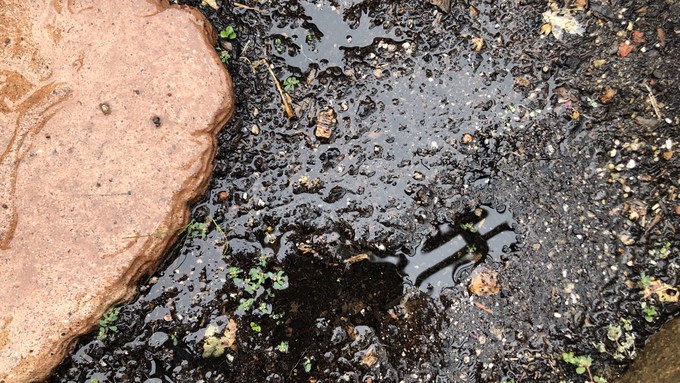
Up to 3 inches of rain expected in Sacramento

Saturated soil can lead to all kinds of problems. Also, avoid walking on wet soil -- it can easily be compacted. Kathy Morrison
After years of drought, are you ready for a flood?
Water may not reach flood stage in your neighborhood, but the incoming “atmospheric river” is expected to give the greater Sacramento area a massive soaking – and the possibility of widespread flooding.
On Wednesday, the National Weather Service issued an “area flood watch,” lasting from 7 a.m. Friday to 4 a.m. Sunday, New Year’s Day.
The rain will actually start Thursday morning with a “definite” chance of showers before dawn and again in the late afternoon, says the weather service. Thursday’s predicted rain total for Sacramento is just under an inch. But that’s followed by almost 2 inches on Friday and Saturday.
That’s a lot of rain for soil to absorb in less than 72 hours.
“Excessive runoff may result in flooding of rivers, creeks, streams and other low-lying and flood-prone locations,” says the weather service. “Creeks and streams may rise out of their banks. Flooding may occur in poor drainage and urban areas. Low-water crossings may be flooded. Storm drains and ditches may become clogged with debris. Extensive street flooding and flooding of creeks and rivers are possible.”
Part of what makes this incoming storm so problematic is we’re already wet. The storm that arrived late Monday dropped 1.26 inches on Sacramento, and more on some surrounding communities. Local creeks are running high, notes the weather service.
Saturated soil can lead to other issues. Be on the lookout for leaning trees. Many trees and large shrubs have weakened roots due to the effects of prolonged drought. They’re more likely to fall in stormy weather.
Also at risk are large, horizontal branches on evergreen trees. So much rain adds a lot of weight. Such branches may need support.
Be prepared for this week’s deluge and help your landscape cope:
* Turn off your sprinklers or other irrigation; your garden won’t need it for a while.
* Make sure storm drains are clear. Rake leaves and debris away from drains.
* Remove saucers from potted plants to avoid root rot.
* Succulents are most at risk in such wet weather. They get too much rain, they rot. Move them to a sheltered location if possible.
* Avoid walking on or working wet soil. It can compact easily, squeezing out needed air for microbes and roots. Put off any transplanting until next week after the soil has drained but remains moist. Don’t plant in soggy soil.
* If you have bare-root plants in need of transplanting, keep them in sawdust or put their roots in a bucket of water. They can stay in water for several days.
Comments
0 comments have been posted.Sacramento Digs Gardening to your inbox.
Sites We Like
Garden Checklist for week of July 21
Your garden needs you!
* Keep your vegetable garden watered, mulched and weeded. Water before 8 a.m. to reduce the chance of fungal infection and to conserve moisture.
* Feed vegetable plants bone meal, rock phosphate or other fertilizers high in phosphate to stimulate more blooms and fruiting. (But wait until daily high temperatures drop out of the 100s.)
* Don’t let tomatoes wilt or dry out completely. Give tomatoes a deep watering two to three times a week.
* Harvest vegetables promptly to encourage plants to produce more. Squash especially tends to grow rapidly in hot weather. Keep an eye on zucchini.
* Pinch back chrysanthemums for bushy plants and more flowers in September.
* Remove spent flowers from roses, daylilies and other bloomers as they finish flowering.
* Pinch off blooms from basil so the plant will grow more leaves.
* Cut back lavender after flowering to promote a second bloom.
* It's not too late to add a splash of color. Plant petunias, snapdragons, zinnias and marigolds.
* From seed, plant corn, pumpkins, radishes, winter squash and sunflowers.